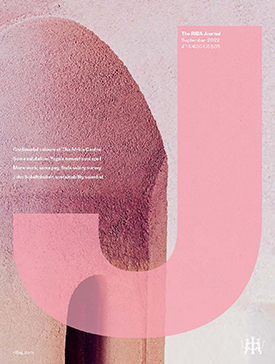
In the arts and in literature, the term avant-garde identifies a genre of art, an experimental work of art, and the experimental artist who created the work of art, which usually is aesthetically innovative, whilst initially being ideologically unacceptable to the artistic establishment of the time. The military metaphor of an advance guard identifies the artists and writers whose innovations in style, form, and subject-matter challenge the artistic and aesthetic validity of the established forms of art and the literary traditions of their time; thus how the artists who created the anti-novel and Surrealism were ahead of their times.

Postmodern art is a body of art movements that sought to contradict some aspects of modernism or some aspects that emerged or developed in its aftermath. In general, movements such as intermedia, installation art, conceptual art and multimedia, particularly involving video are described as postmodern.

Emigre was a (mostly) quarterly magazine published from 1984 until 2005 in Berkeley, California, dedicated to visual communication, graphic design, typography, and design criticism. Produced by Rudy VanderLans and Zuzana Licko, Emigre was known for creating some of the very first digital layouts and typeface designs. Exposure to Licko's typefaces through the magazine lead to the creation of Emigre Fonts in 1985.

Demetri Porphyrios is a Greek architect and author who practices architecture in London as principal of the firm Porphyrios Associates. In addition to his architectural practice and writing, Porphyrios has held a number of teaching positions in the United States, the United Kingdom and Greece. He is currently a visiting professor at the Yale School of Architecture.

Charles Alexander Jencks was an American cultural theorist, landscape designer, architectural historian, and co-founder of the Maggie’s Cancer Care Centres. He published over thirty books and became famous in the 1980s as a theorist of Postmodernism. Jencks devoted time to landform architecture, especially in Scotland. These landscapes include the Garden of Cosmic Speculation and earthworks at Jupiter Artland outside Edinburgh. His continuing project Crawick Multiverse, commissioned by the Duke of Buccleuch, opened in 2015 near Sanquhar.

Léon Krier CVO is a Luxembourgish architect, architectural theorist, and urban planner, a prominent critic of modernist architecture and advocate of New Classical architecture and New Urbanism. Krier combines an international architecture and planning practice with writing and teaching. He is well known for his master plan for Poundbury, in Dorset, England. He is the younger brother of architect Rob Krier.

Harold Foss "Hal" Foster is an American art critic and historian. He was educated at Princeton University, Columbia University, and the City University of New York. He taught at Cornell University from 1991 to 1997 and has been on the faculty at Princeton since 1997. In 1998 he received a Guggenheim Fellowship.
Starchitect is a portmanteau used to describe architects whose celebrity and critical acclaim have transformed them into idols of the architecture world and may even have given them some degree of fame among the general public. Celebrity status is generally associated with avant-gardist novelty. Developers around the world have proven eager to sign up "top talent" (i.e., starchitects) in hopes of convincing reluctant municipalities to approve large developments, of obtaining financing or of increasing the value of their buildings. A key characteristic is that the starchitecture is almost always "iconic" and highly visible within the site or context. As the status is dependent on current visibility in the media, fading media status implies that architects lose "starchitect" status—hence a list can be drawn up of former "starchitects".

Alireza Sagharchi RIBA FRSA is a British-Iranian architect. He is an internationally renowned and leading practitioner of contemporary classical architecture and traditional urban design. During his professional career, he has been responsible for major master planning and building projects in the UK, Europe, North America and the Middle East.
Rob Krier is a Luxembourgian sculptor, architect, urban designer, and theorist. He is former professor of architecture at Vienna University of Technology, Austria. From 1993 to mid-2010 he worked in partnership with architect Christoph Kohl in a joint office based in Berlin, Germany.
Christian Norberg-Schulz was a Norwegian architect, author, educator and architectural theorist. Norberg-Schulz was part of the Modernist Movement in architecture and associated with architectural phenomenology.
In the visual arts, late modernism encompasses the overall production of most recent art made between the aftermath of World War II and the early years of the 21st century. The terminology often points to similarities between late modernism and post-modernism although there are differences. The predominant term for art produced since the 1950s is contemporary art. Not all art labelled as contemporary art is modernist or post-modern, and the broader term encompasses both artists who continue to work in modern and late modernist traditions, as well as artists who reject modernism for post-modernism or other reasons. Arthur Danto argues explicitly in After the End of Art that contemporaneity was the broader term, and that postmodern objects represent a subsector of the contemporary movement which replaced modernity and modernism, while other notable critics: Hilton Kramer, Robert C. Morgan, Kirk Varnedoe, Jean-François Lyotard and others have argued that postmodern objects are at best relative to modernist works.

In architecture, Rationalism is an architectural current which mostly developed from Italy in the 1920s and 1930s. Vitruvius had claimed in his work De architectura that architecture is a science that can be comprehended rationally. The formulation was taken up and further developed in the architectural treatises of the Renaissance. Eighteenth-century progressive art theory opposed the Baroque use of illusionism with the classic beauty of truth and reason.
Massimo Scolari, is an Italian architect, painter and designer.
Andreas Constantine Papadakis FLS was a Cypriot-born British academic, entrepreneur and leading figure in the field of architectural publishing. He opened the Academy Bookshop in Holland Street, Kensington, in 1964 and moved into publishing as Academy Editions in 1968. From then until 1990, when he sold the company to VCH Germany he published more than a thousand titles mainly on art, architecture and the decorative arts. He was the first to publish many international architects in the Architectural Monographs series, which included Alvar Aalto, Michael Graves, Edwin Lutyens, John Soane, Terry Farrell, Richard Rogers, Mies van der Rohe, Hassan Fathy, Tadao Ando, Daniel Libeskind, etc.; and Victor Arwas's Art Deco, first published in 1980, remains the standard work on the subject.

Theo Crosby was an architect, editor, writer and sculptor, engaged with major developments in design across four decades. He was also an early vocal critic of modern urbanism. He is best remembered as a founding partner of the international design partnership Pentagram, and as architect for the reconstruction of Shakespeare's Globe in London. However, his role as éminence grise in British architecture and design from 1950 to 1990 helped effect much broader changes. Crosby's archive is located at the University of Brighton Design Archives.

The RIBA Journal,, is an architecture magazine and website published by the Royal Institute of British Architects, based in London. It has the largest circulation of any UK-originating architecture magazine. Alongside the monthly publication in print, the online edition is updated daily and has additional content.

New Classical architecture, New Classicism or Contemporary Classical architecture is a contemporary movement in architecture that continues the practice of Classical architecture. It is sometimes considered the modern continuation of Neoclassical architecture, even though other styles might be cited as well, such as Gothic, Baroque, Renaissance or even non-Western styles – often referenced and recreated from a postmodern perspective as opposed to being strict revival styles.
Papadakis Publisher is an independent art, architecture and natural science book publisher founded in London, United Kingdom, by Andreas Papadakis and his daughter Alexandra Papadakis. Since 1968, Papadakis Publisher and its predecessor Academy Editions have published more than a thousand titles, on art, architecture, science and the decorative arts.
Monica Pidgeon was a British interior designer and architectural writer best known as the editor of Architectural Design from 1946 to 1975.












